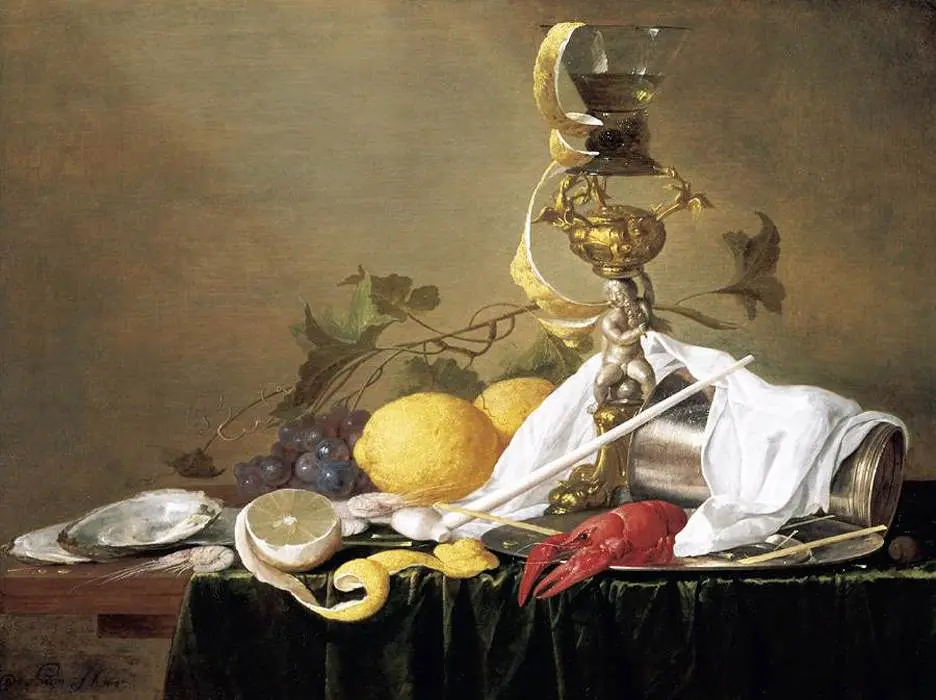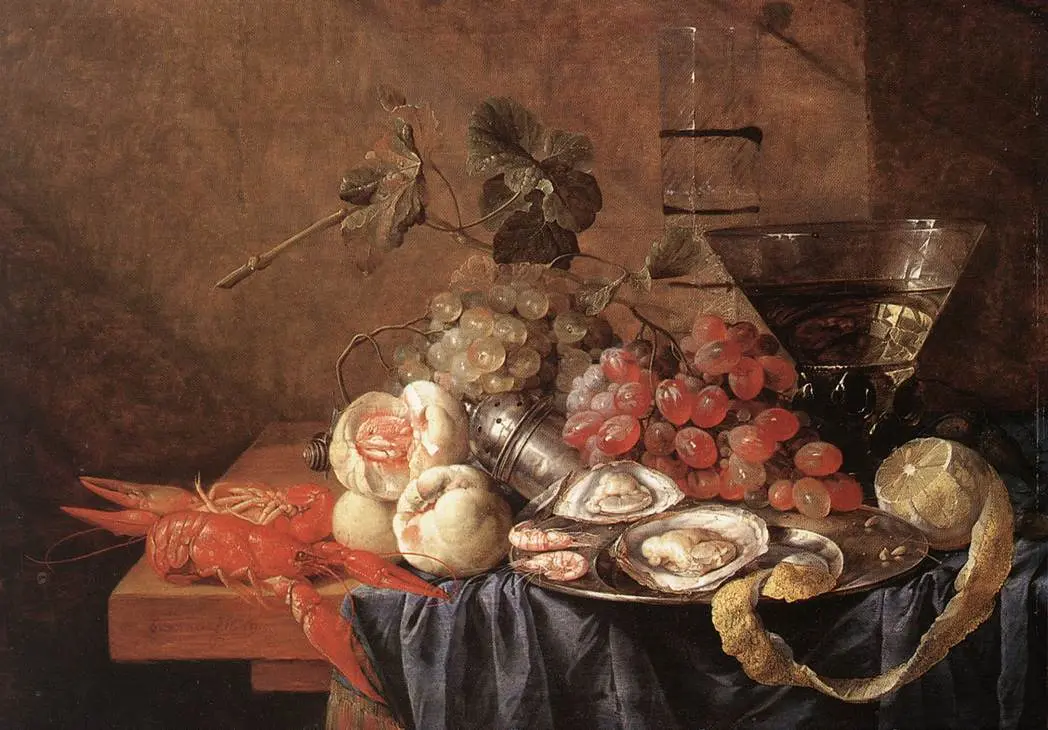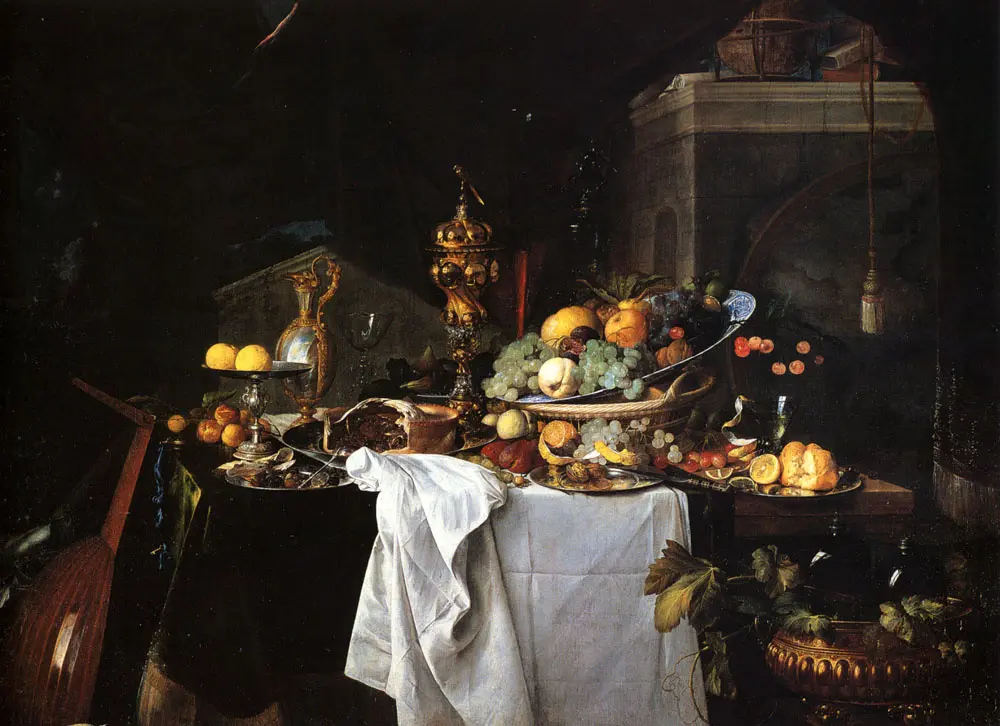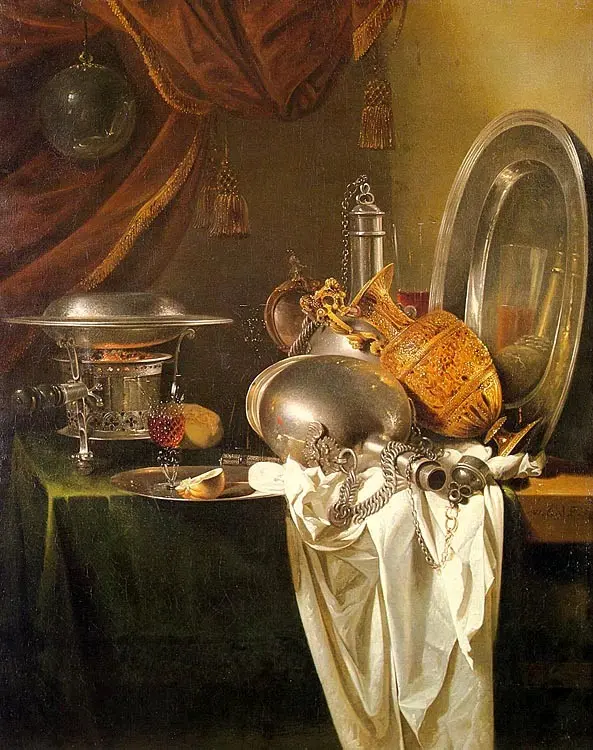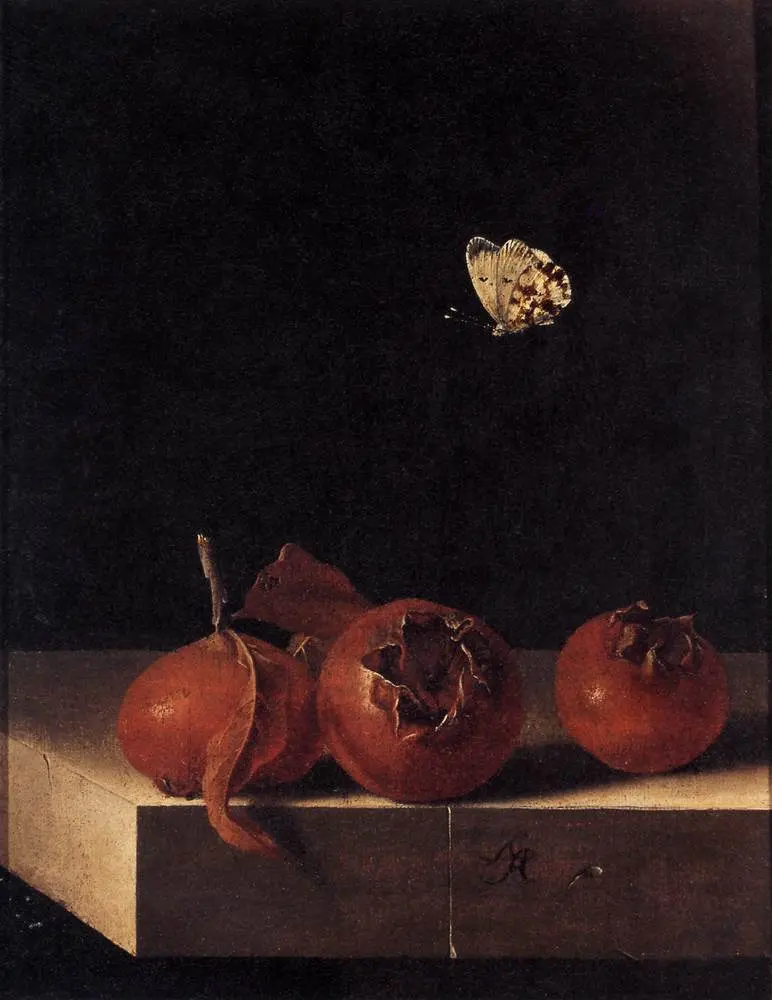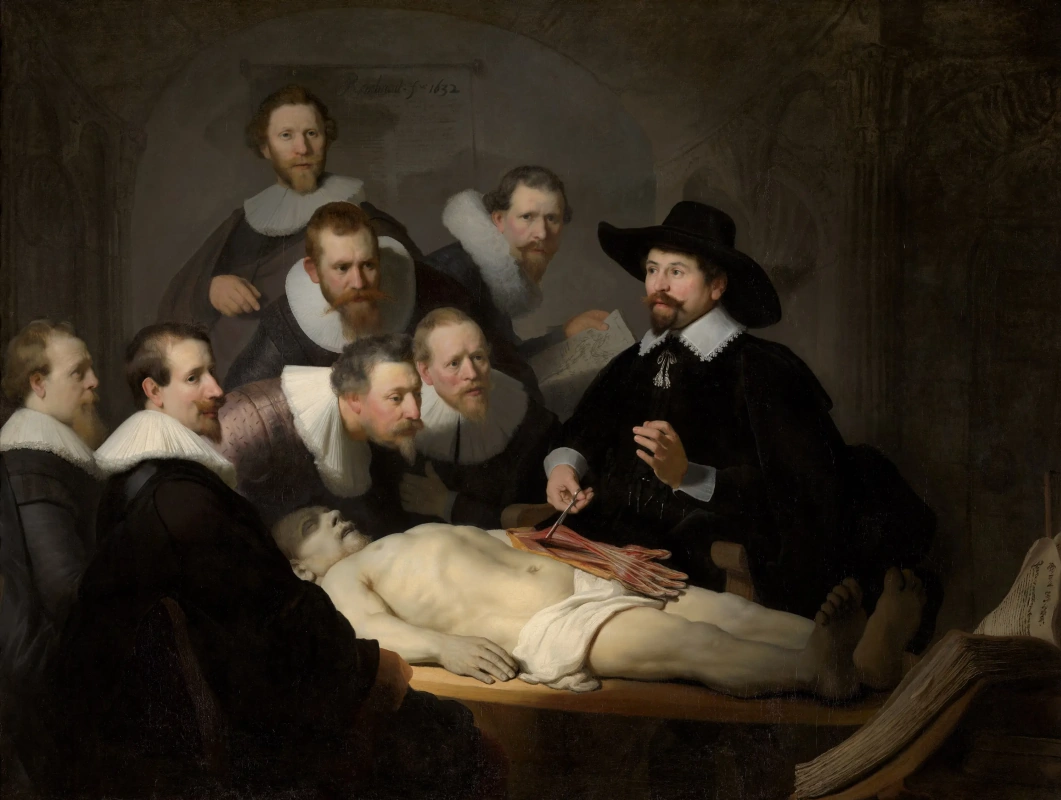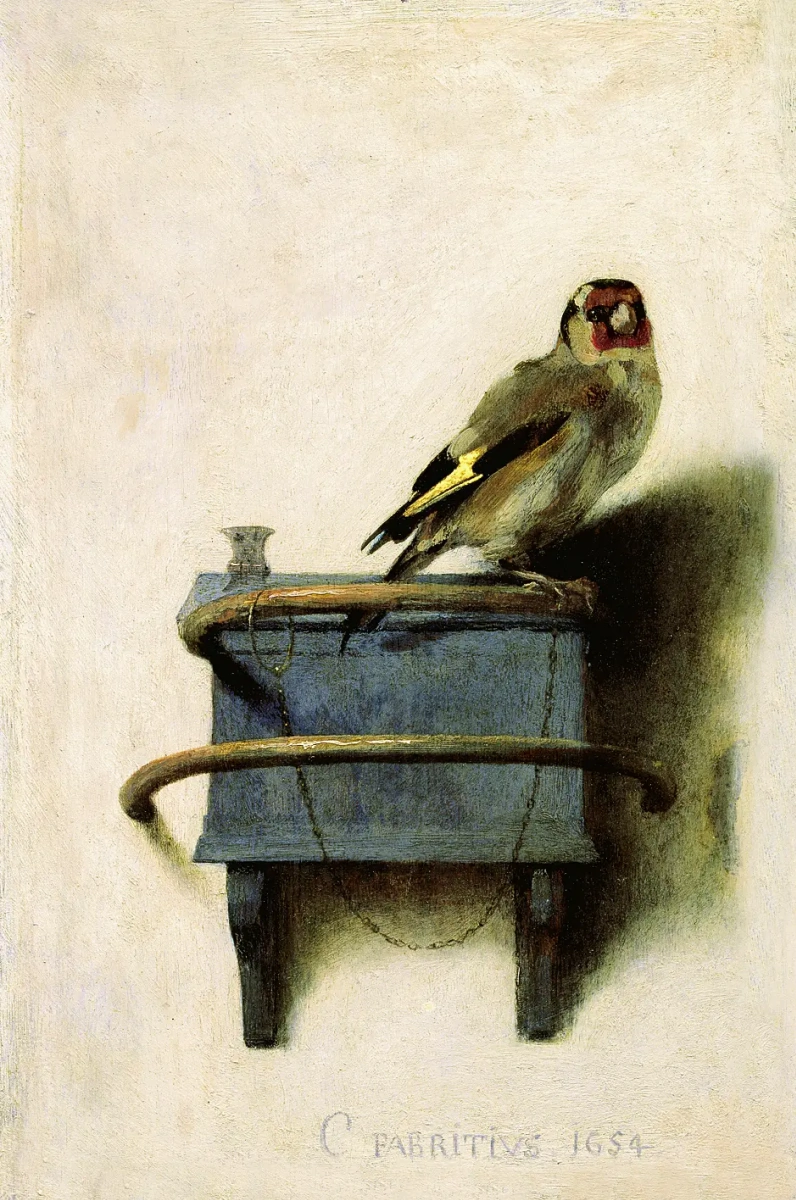Carel Fabritius’s painting The Goldfinch (1654) left the Mauritshuis in The Hague on a "brief winter migratory". Now it is exhibited at the National Gallery of Scotland in Edinburgh until 18 December. The painting has never before been shown in Scotland, and has only been exhibited in the UK on a handful of occasions. When it was last shown outside the Netherlands at the Frick Collection in New York in 2014, it was seen by a record breaking 200,000 people.
The small canvas, measuring 34×23cm, is perhaps best known to a wider audience as the cover of the novel of the same name by Donna Tartt. This book was partly responsible for record exhibition attendance at the Frick Collection in New York.
The "Goldfinch", the great novel by American author Donna Tartt about the adventures of a young man named Theo and Carel Fabritius’s masterpiece, is the bestseller of 2013. It was awarded the Pulitzer Prize.
From the very beginning of this massive book, a reader understands that this is an outstanding book that captivates, forces to sympathize with the main character and makes. One only regrets that there’s no illustrations. But Arthive changes it easily!
The small canvas, measuring 34×23cm, is perhaps best known to a wider audience as the cover of the novel of the same name by Donna Tartt. This book was partly responsible for record exhibition attendance at the Frick Collection in New York.
The "Goldfinch", the great novel by American author Donna Tartt about the adventures of a young man named Theo and Carel Fabritius’s masterpiece, is the bestseller of 2013. It was awarded the Pulitzer Prize.
From the very beginning of this massive book, a reader understands that this is an outstanding book that captivates, forces to sympathize with the main character and makes. One only regrets that there’s no illustrations. But Arthive changes it easily!
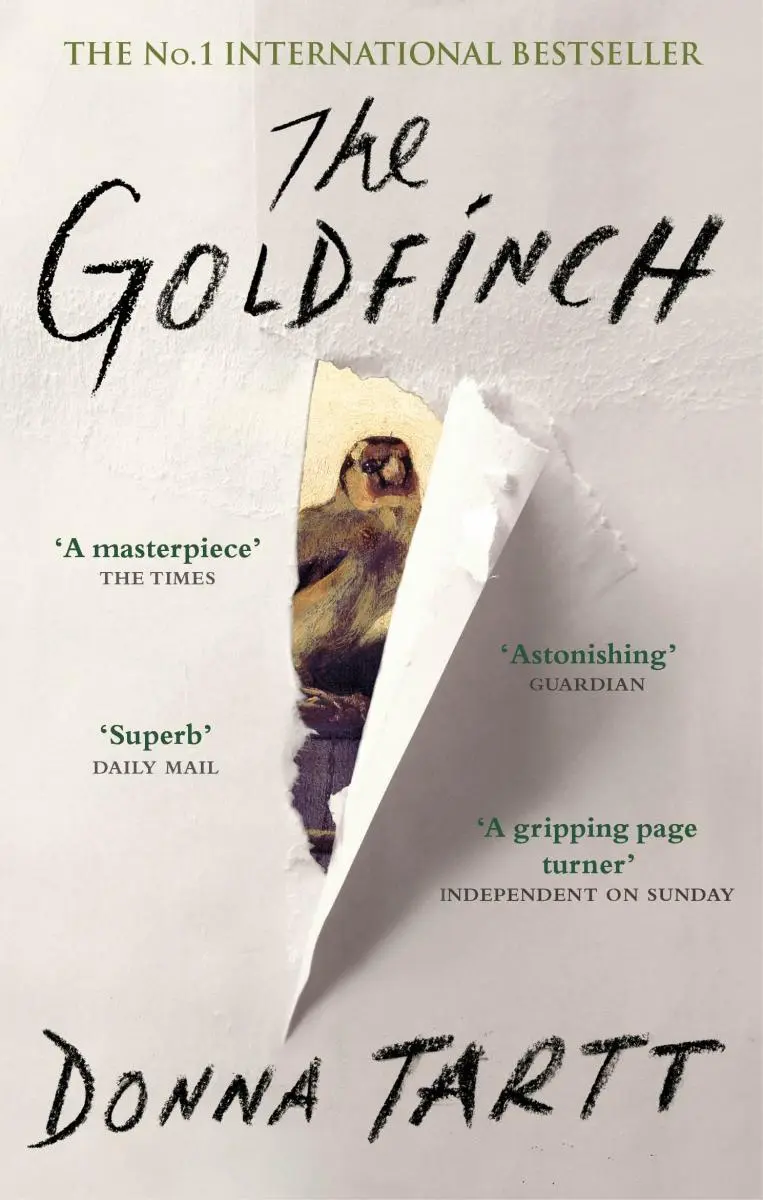
The novel begins with a boy, contemporary Oliver Twist. Teenager Theo went to school with his mother because he has done something wrong and could even be eliminated. But mother got seasick in a taxi, they came out to walk through Central Park, but caught in a rainstorm they ducked into the Metropolitan Museum of Art, hoping to wait downpour for half an hour, and to take in an exhibition "Portraiture and still lifes: the work of the northern masters of the Golden Age" .
Theo`s Mom (on Teo’s behalf as narrator) is clever and beautiful, a former fashion model with incomplete art history education, who spends every spare moment in the museums. She arranged an excellent excursion for her son, being listened by the passing visitors with delight. Be sure you will also get addicted!
Theo`s Mom (on Teo’s behalf as narrator) is clever and beautiful, a former fashion model with incomplete art history education, who spends every spare moment in the museums. She arranged an excellent excursion for her son, being listened by the passing visitors with delight. Be sure you will also get addicted!
So, here are the most vivid quotes from the lecture on Dutch painting, which mother has read to her son in Donna Tartt`s novel "The Goldfinch" and Arthive’s illustrations to it: you will not have to strain your memory, imagination and Google.
Gay PAL
1630, 81×66.5 cm
"I hate to race through like this," she was saying as I caught up with her at the top of the stairs, "but then again it’s the kind of show where you need to come two or three times. There’s The Anatomy Lesson, and we do have to see that, but what I really want to see is one tiny, rare piece by a painter who was Vermeer’s teacher. Greatest Old Master you’ve never heard of. The Frans Hals paintings are a big deal, too. You know Hals, don’t you? The Jolly Toper? And the almshouse governors?"
"Right," I said tentatively. Of the paintings she’d mentioned, The Anatomy Lesson was the only one I knew. A detail from it was featured on the poster for the exhibition: livid flesh, multiple shades of black, alcoholic-looking surgeons with bloodshot eyes and red noses.
"Right," I said tentatively. Of the paintings she’d mentioned, The Anatomy Lesson was the only one I knew. A detail from it was featured on the poster for the exhibition: livid flesh, multiple shades of black, alcoholic-looking surgeons with bloodshot eyes and red noses.
Group portrait of the Regents of the asylum for the aged in Harlem
1664, 172.3×256 cm
I was not very excited at the prospect of a lot of pictures of Dutch people standing around in dark clothes, and when we pushed through the glass doors—from echoing halls into carpeted hush—I thought at first we’d gone into the wrong hall. The walls glowed with a warm, dull haze of opulence, a generic mellowness of antiquity; but then it all broke apart into clarity and color and pure Northern light, portraits, interiors, still lifes, some tiny, others majestic: ladies with husbands, ladies with lapdogs, lonely beauties in embroidered gowns and splendid, solitary merchants in jewels and furs. Ruined banquet tables littered with peeled apples and walnut shells; draped tapestries and silver; trompe l’oeils with crawling insects and striped flowers. And the deeper we wandered, the stranger and more beautiful the pictures became. Peeled lemons, with the rind slightly hardened at the knife’s edge, the greenish shadow of a patch of mold. Light striking the rim of a half-empty wine glass.
We can only guess what kind of still life Donna Tartt imagined for his main characters. Perhaps some of them can be found in the list of "dead nature" of the European masters. Here are few examples of the Golden Age’s still life, demonstrating the trends described in the book.
"I like this one too," whispered my mother, coming up alongside me at a smallish and particularly haunting still life: a white butterfly against a dark ground, floating over some red fruit. The background—a rich chocolate black—had a complicated warmth suggesting crowded storerooms and history, the passage of time.
"They really knew how to work this edge, the Dutch painters—ripeness sliding into rot. The fruit’s perfect but it won’t last, it’s about to go. And see here especially," she said, reaching over my shoulder to trace in the air with her finger, "this passage—the butterfly." The underwing was so powdery and delicate it looked as if the color would smear if she touched it. "How beautifully he plays it. Stillness with a tremble of movement."
"They really knew how to work this edge, the Dutch painters—ripeness sliding into rot. The fruit’s perfect but it won’t last, it’s about to go. And see here especially," she said, reaching over my shoulder to trace in the air with her finger, "this passage—the butterfly." The underwing was so powdery and delicate it looked as if the color would smear if she touched it. "How beautifully he plays it. Stillness with a tremble of movement."
Still life with three fruits of medlar and a butterfly
1705, 27×20 cm
My mother, who’d been standing a bit too close, stepped back to regard the painting—oblivious to the gum-chewing security guard whose attention she’d attracted, who was staring fixedly at her back.
"Well, the Dutch invented the microscope," she said. "They were jewelers, grinders of lenses. They want it all as detailed as possible because even the tiniest things mean something. Whenever you see flies or insects in a still life—a wilted petal, a black spot on the apple—the painter is giving you a secret message. He’s telling you that living things don’t last—it's all temporary. Death in life. That’s why they’re called natures mortes. Maybe you don’t see it at first with all the beauty and bloom, the little speck of rot. But if you look closer—there it is."
I leaned down to read the note, printed in discreet letters on the wall, which informed me that the painter—Adriaen Coorte, dates of birth and death uncertain—had been unknown in his own lifetime and his work unrecognized until the 1950s
"Well, the Dutch invented the microscope," she said. "They were jewelers, grinders of lenses. They want it all as detailed as possible because even the tiniest things mean something. Whenever you see flies or insects in a still life—a wilted petal, a black spot on the apple—the painter is giving you a secret message. He’s telling you that living things don’t last—it's all temporary. Death in life. That’s why they’re called natures mortes. Maybe you don’t see it at first with all the beauty and bloom, the little speck of rot. But if you look closer—there it is."
I leaned down to read the note, printed in discreet letters on the wall, which informed me that the painter—Adriaen Coorte, dates of birth and death uncertain—had been unknown in his own lifetime and his work unrecognized until the 1950s
Portrait of a young man with a skull (Vanitas)
1626, 92.2×80.8 cm
I trailed behind my mother as she zigzagged from portrait to portrait, much faster than she usually went through an exhibition, from flowers to card tables to fruit, ignoring a great many of the paintings (our fourth silver tankard or dead pheasant) and veering to others without hesitation ("Now, Hals. He’s so corny sometimes with all these tipplers and wenches but when he’s on, he’s on. None of this fussiness and precision, he’s working wet-on-wet
, slash, slash, it’s all so fast. The faces and hands—rendered really finely, he knows that’s what the eye is drawn to but look at the clothes—so loose—almost sketched. Look how open and modern the brushwork is!"). We spent some time in front of a Hals portrait of a boy holding a skull ("Don't be mad, Theo, but who do you think he looks like? Somebody"—tugging the back of my hair—"who could use a haircut?")—and, also, two big Hals portraits of banqueting officers, which she told me were very, very famous and a gigantic influence on Rembrandt. ("Van Gogh loved Hals too. Somewhere, he’s writing about Hals and he says: Frans Hals has no less than twenty-nine shades of black! Or was it twenty-seven?")
Banquet of the officers of the Harlem shooting Guild of St George
1616, 175×324 cm
Again, we can only guess which of the group banquet portraits by Hals are meant here.
The Banquet of the Officers of the St George Militia Company
1627, 179×257.5 cm
Officers of the Haarlem Militia Company of Saint Adrian
1627, 183×266.5 cm
"Now, Rembrandt," my mother said. "Everybody always says this painting is about reason and enlightenment, the dawn of scientific inquiry, all that, but to me it’s creepy how polite and formal they are, milling around the slab like a buffet at a cocktail party. Although—" she pointed—"see those two puzzled guys in the back there? They’re not looking at the body—they're looking at us. You and me. Like they see us standing here in front of them—two people from the future. Startled. ‘What are you doing here?' Very naturalistic. But then"—she traced the corpse, midair, with her finger—"the body isn’t painted in any very natural way at all, if you look at it. Weird glow coming off it, do you see? Alien autopsy, almost. See how it lights up the faces of the men looking down at it? Like it’s shining with its own light source? He’s painting it with that radioactive quality because he wants to draw our eye to it—make it jump out at us. And here"—she pointed to the flayed hand—"see how he calls attention to it by painting it so big, all out of proportion to the rest of the body? He’s even turned it around so the thumb is on the wrong side, do you see? Well, he didn’t do that by mistake. The skin is off the hand—we see it immediately, something very wrong—but by reversing the thumb he makes it look even more wrong, it registers subliminally even if we can’t put our finger on it, something really out of order, not right. Very clever trick.
The Anatomy Lesson of Dr Nicolaes Tulp
1632, 169.5×216.5 cm
"This is just about the first painting I ever really loved," my mother was saying. "You'll never believe it, but it was in a book I used to take out of the library when I was a kid. I used to sit on the floor by my bed and stare at it for hours, completely fascinated—that little guy! And, I mean, actually it’s incredible how much you can learn about a painting by spending a lot of time with a reproduction, even not a very good reproduction. I started off loving the bird, the way you’d love a pet or something, and ended up loving the way he was painted." She laughed. "The Anatomy Lesson was in the same book actually, but it scared the pants off me. I used to slam the book shut when I opened it to that page by mistake."
Goldfinch
1654, 33.5×22.8 cm
The girl and the old man had come up next to us. Self-consciously, I leaned forward and looked at the painting. It was a small picture, the smallest in the exhibition, and the simplest: a yellow finch, against a plain, pale ground, chained to a perch by its twig of an ankle.
"He was Rembrandt’s pupil, Vermeer’s teacher," my mother said. "And this one little painting is really the missing link between the two of them—that clear pure daylight, you can see where Vermeer got his quality of light from. Of course, I didn’t know or care about any of that when I was a kid, the historical significance. But it’s there."
I stepped back, to get a better look. It was a direct and matter-of-fact little creature, with nothing sentimental about it; and something about the neat, compact way it tucked down inside itself—its brightness, its alert watchful expression—made me think of pictures I’d seen of my mother when she was small: a dark-capped finch with steady eyes.
"It was a famous tragedy in Dutch history," my mother was saying. "A huge part of the town was destroyed."
"What?"
"The disaster at Delft. That killed Fabritius. Did you hear the teacher back there telling the children about it?"
"He was Rembrandt’s pupil, Vermeer’s teacher," my mother said. "And this one little painting is really the missing link between the two of them—that clear pure daylight, you can see where Vermeer got his quality of light from. Of course, I didn’t know or care about any of that when I was a kid, the historical significance. But it’s there."
I stepped back, to get a better look. It was a direct and matter-of-fact little creature, with nothing sentimental about it; and something about the neat, compact way it tucked down inside itself—its brightness, its alert watchful expression—made me think of pictures I’d seen of my mother when she was small: a dark-capped finch with steady eyes.
"It was a famous tragedy in Dutch history," my mother was saying. "A huge part of the town was destroyed."
"What?"
"The disaster at Delft. That killed Fabritius. Did you hear the teacher back there telling the children about it?"
I had. There had been a trio of ghastly landscapes, by a painter named Egbert van der Poel, different views of the same smouldering wasteland: burnt ruined houses, a windmill with tattered sails, crows wheeling in smoky skies. An official looking lady had been explaining loudly to a group of middle-school kids that a gunpowder factory exploded at Delft in the 1600s, that the painter had been so haunted and obsessed by the destruction of his city that he painted it over and over.
"Well, Egbert was Fabritius’s neighbor, he sort of lost his mind after the powder explosion, at least that’s how it looks to me, but Fabritius was killed and his studio was destroyed. Along with almost all his paintings, except this one." She seemed to be waiting for me to say something, but when I didn’t, she continued: "He was one of the greatest painters of his day, in one of the greatest ages of painting. Very very famous in his time. It’s sad though, because maybe only five or six paintings survived, of all his work. All the rest of it is lost—everything he ever did."
"Well, Egbert was Fabritius’s neighbor, he sort of lost his mind after the powder explosion, at least that’s how it looks to me, but Fabritius was killed and his studio was destroyed. Along with almost all his paintings, except this one." She seemed to be waiting for me to say something, but when I didn’t, she continued: "He was one of the greatest painters of his day, in one of the greatest ages of painting. Very very famous in his time. It’s sad though, because maybe only five or six paintings survived, of all his work. All the rest of it is lost—everything he ever did."
It had been preserved some 20 paintings by Van der Poel depicting the consequences of the explosion in Delft, we can only guess which of them the novel’s characters have seen.
What happened was a tragedy for the artist also because his little daughter died during the explosion. Van der Poel would never come back to depicting carefree scenes: he would write the effects of the explosion and fire. Psychologists consider the artist to be the inventor of art therapy: his paintings with scenes of accidents were popular (he even painted their copies), as the survivors, probably, tried to get back to life with their help.
What happened was a tragedy for the artist also because his little daughter died during the explosion. Van der Poel would never come back to depicting carefree scenes: he would write the effects of the explosion and fire. Psychologists consider the artist to be the inventor of art therapy: his paintings with scenes of accidents were popular (he even painted their copies), as the survivors, probably, tried to get back to life with their help.

"Anyway, if you ask me," my mother was saying, "this is the most extraordinary picture in the whole show. Fabritius is making clear something that he discovered all on his own, that no painter in the world knew before him—not even Rembrandt."
Very softly—so softly I could barely hear her—I heard the girl whisper: "It had to live its whole life like that?"
I’d been wondering the same thing; the shackled foot, the chain was terrible; her grandfather murmured some reply but my mother (who seemed totally unaware of them, even though they were right next to us) stepped back and said: "Such a mysterious picture, so simple. Really tender—invites you to stand close, you know? All those dead pheasants back there and then this little living creature."
"People die, sure," my mother was saying. "But it’s so heartbreaking and unnecessary how we lose things. From pure carelessness. Fires, wars. The Parthenon, used as a munitions storehouse. I guess that anything we manage to save from history is a miracle."
And then in the "Goldfinch" the most interesting follows …
"People die, sure," my mother was saying. "But it’s so heartbreaking and unnecessary how we lose things. From pure carelessness. Fires, wars. The Parthenon, used as a munitions storehouse. I guess that anything we manage to save from history is a miracle."
And then in the "Goldfinch" the most interesting follows …








